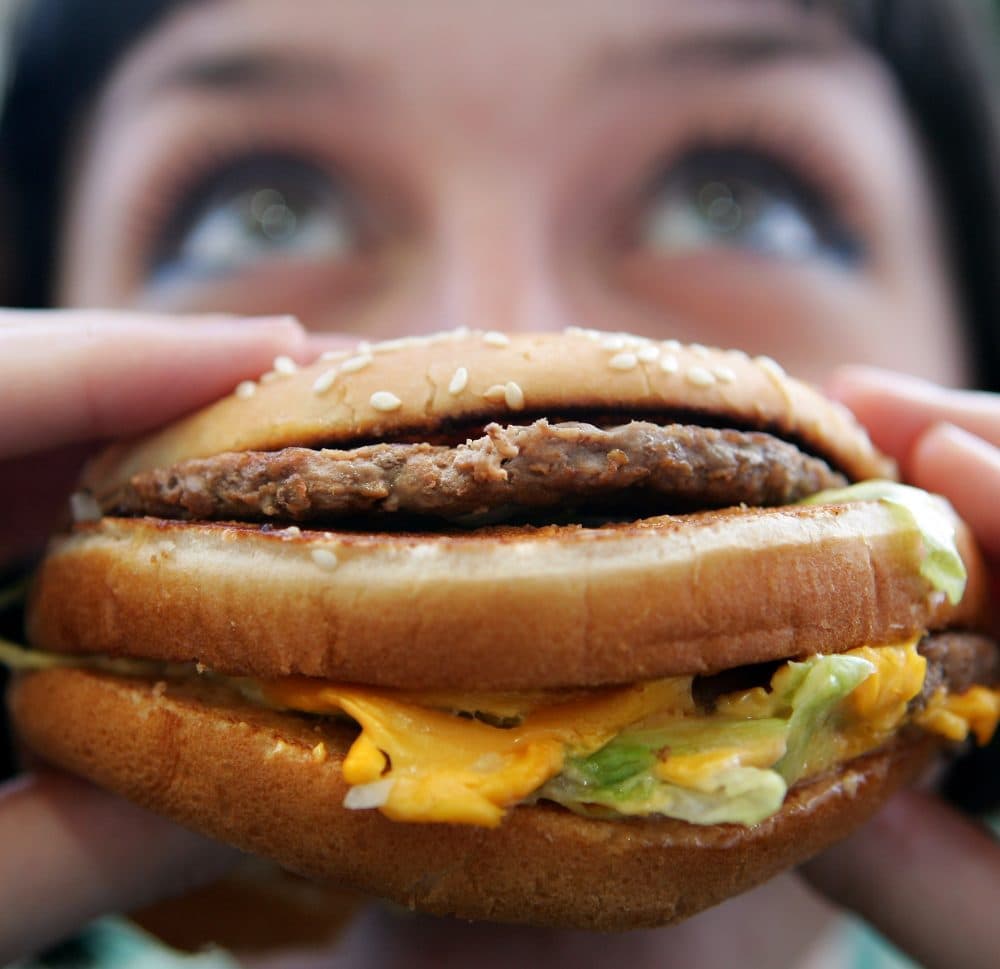Advertisement
Restaurant Portion Sizes Contribute To Obesity Epidemic
Resume
Most restaurants pack their plates with portions that are often two or three times the recommended serving size. And because people don’t always know how many calories they’re consuming when they dine out, they often eat all that food.
Here & Now’s Jeremy Hobson talks with Dr. Deborah Cohen (@DrDebCohen), senior scientist at the RAND Corporation, about how large portions are contributing to obesity and chronic disease, and why they should be smaller.
Interview Highlights
On the average portion size in restaurants
"Just a few years ago, the USDA did a study on portion sizes in restaurants. They found that on average every meal or snack eaten away from home is 134 more calories than people would get if they eat the same meal or snack at home. That translates, on average, to people gaining about two pounds a year.
"They're way too big. The average meal should be 700 calories or less for adults and 600 or less for children. Restaurants can afford to serve too much because food is relatively cheap."
On why we often eat all of what's in front of us, even if the portion size is large
"Most people do eat too much if they're served more than they need. That is human nature. We evolved in an atmosphere of scarcity when we couldn't really count on where our next meal was coming from, so we're designed to eat more than we need. We have a mechanism to store extra calories as fat. But now that food is ubiquitous and easily gotten, that part of human nature is working against us."
On when you should stop eating
"This is something that people cannot easily control on their own. There have been multiple studies on what happens when you serve people different portion sizes. As I said earlier, people will eat too much if they're served too much. It's actually the provider of the food that controls how much we eat more than we do ourselves. When people are eating, they aren't really fully concentrating on the food in front of them. When we dine out, it's a social experience, so we're talking to our dinner companion, we're watching our kids, we're looking around. Because we're not paying attention, we just tend to eat based on what's in front of us."
On portion sizes when we cook for ourselves
"We usually make them less than what we are served when we dine out. That's one reason to try and limit how much we dine out. But restaurants could make an effort to serve appropriate portion sizes. They should really think about the welfare of their customers and serve only what's appropriate."
"Most people do eat too much of if they're served more than they need. That is human nature."
Dr. Deborah Cohen
On whether posting calorie counts helps limit what we eat
"There's been many evaluations of the calorie counts. The sad truth is that they really don't influence very much what people eat. It helps people with a higher level of education more than with a lower level. About 30 percent of adults don't have the mathematical skills to make use of the calorie information. I don't think that's going to be very promising for people to help reduce how much they're eating when they dine out. One of the things I've been advocating is to have standard portion sizes where a portion that's served is just about what you need and you shouldn't have to worry about it leading to a chronic disease."
On how to encourage restaurants to reduce their portion sizes
"I think we could have demand from general consumers. But it's something we should be considering in the future for potential regulation. We have very strict regulations to protect us from foodborne diseases, infectious diseases, from not following sanitary guidelines. They are very complicated, but restaurants all find a way to comply with them, meaning they have to be careful about refrigeration, how long they cook food, how they store food. To control portion sizes is really very simple. It only takes a measuring cup or a kitchen scale. It's certainly not rocket science."
This article was originally published on March 29, 2017.
This segment aired on March 29, 2017.